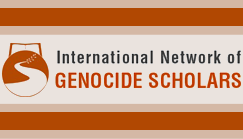Event Title
Sexual Violence During Genocide: Production of Knowledge for Upstream Prevention Efforts
Submission Type
Panel
Abstract
Using upstream prevention methods, the violent repetitions of sex-selective mass killing can be disrupted. To identify where such upstream prevention might occur, data is needed. In particular, the use of indicators of sexual and gender-based violence can help produce knowledge for upstream prevention. Sexual and gender-based violence is related to genocide by what Elisa von Joeden-Forgey refers to “life force atrocities.” Life force atrocities during genocide distort gender relations and result in particularly brutal forms of sexual violence. This concept bridges the gap between what is considered sexual violence as a form of genocide and sexual violence during conflict, producing a larger definition for gendercide than is encompassed in the word “genocide.” During the 1990s, the former Yugoslavia experienced an astounding level of sexual violence of this type. Studying cases such as these can help produce needed knowledge for future prevention measures. Opportunities to disrupt gendercide occur along a continuum from before gendercide occurs to after it has occurred. The continuum of preventative methods is a concept used in genocide prevention that is applicable to gendercide. An empirically grounded approach to gendercide will help identify where upstream prevention factors may be useful. In addition, it is important to note that downstream prevention factors ultimately affect upstream prevention factors. This paper will explore how global knowledge about sexual and gender-based violence can be produced and used to disrupt gendercide. The implications of using indicators as a technology of knowledge will also be explored.
Sexual Violence During Genocide: Production of Knowledge for Upstream Prevention Efforts
Using upstream prevention methods, the violent repetitions of sex-selective mass killing can be disrupted. To identify where such upstream prevention might occur, data is needed. In particular, the use of indicators of sexual and gender-based violence can help produce knowledge for upstream prevention. Sexual and gender-based violence is related to genocide by what Elisa von Joeden-Forgey refers to “life force atrocities.” Life force atrocities during genocide distort gender relations and result in particularly brutal forms of sexual violence. This concept bridges the gap between what is considered sexual violence as a form of genocide and sexual violence during conflict, producing a larger definition for gendercide than is encompassed in the word “genocide.” During the 1990s, the former Yugoslavia experienced an astounding level of sexual violence of this type. Studying cases such as these can help produce needed knowledge for future prevention measures. Opportunities to disrupt gendercide occur along a continuum from before gendercide occurs to after it has occurred. The continuum of preventative methods is a concept used in genocide prevention that is applicable to gendercide. An empirically grounded approach to gendercide will help identify where upstream prevention factors may be useful. In addition, it is important to note that downstream prevention factors ultimately affect upstream prevention factors. This paper will explore how global knowledge about sexual and gender-based violence can be produced and used to disrupt gendercide. The implications of using indicators as a technology of knowledge will also be explored.





Comments
View the agenda item.
View Christy Yoder's bio.